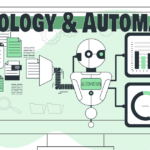Building and managing a team effectively is essential for the growth and success of a business. As a business grows, it can be challenging to ensure that everyone is working towards the same goals, and that communication and collaboration are efficient. To build and manage a team effectively, it’s important to clearly define roles and responsibilities, communicate regularly, foster a positive work environment, delegate tasks, provide opportunities for professional development, and recognize and reward good performance. By following these principles, a business can build a productive, engaged, and aligned team that supports the growth and success of the business.
Understanding the importance of building a strong and effective team as your business grows
Building a strong and effective team is essential for the growth and success of any business. As a business grows, the challenges of managing and leading a team also increase. In order to build a team that is productive, engaged, and aligned with the goals of the business, there are several key considerations that need to be taken into account.
- Clearly Define Roles and Responsibilities: Each team member should have a clear understanding of their role and how it contributes to the overall success of the business. Clear roles and responsibilities can help to prevent confusion and ensure that everyone is working towards the same goals.
- Communicate Regularly: Regular team meetings and one-on-one check-ins are crucial for keeping everyone on the same page and addressing any issues that may arise. Effective communication can help to ensure that everyone is aware of what is happening within the business and that any concerns or questions are addressed in a timely manner.
- Foster a Positive and Productive Work Environment: A positive work environment can help to foster collaboration, open communication, and a sense of teamwork among employees. This can lead to increased productivity and employee engagement.
- Delegate Tasks and Responsibilities: As the business grows, it becomes increasingly important to delegate tasks and responsibilities to team members. This allows team members to take ownership of their work and make decisions, which can help to improve their skills and engagement.
- Provide Opportunities for Professional Development: Investing in the growth and development of team members can help to improve their skills and keep them engaged. Professional development opportunities can include training programs, mentoring, and networking events.
- Recognize and Reward Good Performance: Showing appreciation for hard work and dedication can help to motivate and retain team members. Recognizing and rewarding good performance can include bonuses, promotions, and public recognition.
In conclusion, building and managing a team effectively is crucial for the growth and success of any business. By clearly defining roles and responsibilities, communicating regularly, fostering a positive work environment, delegating tasks and responsibilities, providing opportunities for professional development, and recognizing and rewarding good performance, businesses can build a strong and effective team that supports their growth and success.
Strategies for recruiting and hiring top talent
Recruiting and hiring top talent is essential for the growth and success of any business. However, finding and attracting the best candidates can be a challenging task. Here are a few strategies that can help businesses to recruit and hire top talent:
- Define the Job Requirements: Clearly defining the job requirements can help to ensure that you are attracting the right candidates for the job. This includes identifying the skills, experience, and qualifications that are required for the role.
- Use a variety of Recruiting Channels: Utilizing a variety of recruiting channels can help to reach a wider pool of potential candidates. This can include job boards, social media, employee referrals, and recruitment agencies.
- Create an Attractive Job Listing: A well-written and detailed job listing can help to attract the right candidates for the job. It should include a clear and concise description of the role and responsibilities, as well as information about the company culture and benefits.
- Screen Candidates Carefully: Screening candidates carefully can help to ensure that you are only considering the most qualified and suitable candidates for the role. This can include conducting initial phone screens, and in-person or video interviews.
- Offer Competitive Compensation and Benefits: Offering competitive compensation and benefits can help to attract and retain top talent. This includes not only salary and bonuses, but also benefits such as health insurance, retirement plans, and paid time off.
- Create a Positive Candidate Experience: Creating a positive candidate experience can help to attract top talent and improve the company’s reputation. This includes providing timely and clear communication throughout the recruiting and hiring process, as well as being respectful and professional.
- Make a Quick Decision: Making a quick decision and extending an offer to top candidates can help to ensure that they don’t accept an offer from another company.
In conclusion, recruiting and hiring top talent is essential for the growth and success of any business. By using a variety of recruiting channels, creating an attractive job listing, screening candidates carefully, offering competitive compensation and benefits, creating a positive candidate experience, making a quick decision, businesses can find and attract top talent that will support their growth and success.
Tips for creating a positive and productive work environment
Creating a positive and productive work environment is essential for the growth and success of any business. A positive work environment can help to foster collaboration, open communication, and a sense of teamwork among employees, which can lead to increased productivity and employee engagement. Here are a few tips to help businesses create a positive and productive work environment:
- Encourage Open Communication: Encouraging open communication can help to ensure that everyone is aware of what is happening within the business and that any concerns or questions are addressed in a timely manner. This can include regularly scheduled team meetings, one-on-one check-ins, and an open-door policy for employees.
- Foster Collaboration: Collaboration among employees can lead to increased productivity and innovation. Encourage team members to work together on projects and share ideas and information.
- Recognize and Reward Good Performance: Showing appreciation for hard work and dedication can help to motivate and retain employees. Recognizing and rewarding good performance can include bonuses, promotions, and public recognition.
- Provide Opportunities for Professional Development: Investing in the growth and development of employees can help to improve their skills and keep them engaged. Professional development opportunities can include training programs, mentoring, and networking events.
- Create a Comfortable and Inviting Workplace: Creating a comfortable and inviting workplace can help to improve employee morale and productivity. This can include providing comfortable seating, natural light, and plants, as well as maintaining a clean and organized work area.
- Encourage Work-Life Balance: Encouraging work-life balance can help to reduce employee stress and increase productivity. This can include offering flexible schedules and remote work options, as well as promoting the importance of time off and self-care.
- Promote a culture of inclusion and diversity: By promoting a culture of inclusion and diversity, you can create an environment where everyone feels valued and respected, which can lead to better collaboration and creativity.
In conclusion, creating a positive and productive work environment is essential for the growth and success of any business. By encouraging open communication, fostering collaboration, recognizing and rewarding good performance, providing opportunities for professional development, creating a comfortable and inviting workplace, encouraging work-life balance and promoting a culture of inclusion and diversity, businesses can create an environment where employees are productive, engaged, and aligned with the goals of the business.
The role of communication and collaboration in building a strong team
Effective communication and collaboration are essential for building a strong team in any organization. When team members are able to communicate effectively and work together seamlessly, they can accomplish more, make better decisions, and achieve greater success. Here are a few ways in which communication and collaboration play a key role in building a strong team:
- Clear Communication: Clear and effective communication is essential for ensuring that everyone is on the same page and working towards the same goals. This can include regular team meetings, one-on-one check-ins, and an open-door policy for employees.
- Open Dialogue: Encouraging open dialogue among team members can help to foster an environment of trust and respect. This can lead to increased productivity, better decision-making, and problem-solving.
- Collaboration: Collaboration among team members can lead to increased productivity and innovation. Encourage team members to work together on projects and share ideas and information.
- Shared Goals: Having shared goals and objectives can help to ensure that everyone is working towards the same outcome. This can include clearly defined roles and responsibilities, and regular check-ins to ensure that everyone is on track.
- Feedback: Providing regular feedback can help to improve communication and collaboration among team members. This can include regular performance evaluations, as well as informal feedback on a regular basis.
- Conflict Resolution: Conflict resolution is an important aspect of communication and collaboration. By providing team members with the skills and tools to resolve conflicts effectively, organizations can improve communication and collaboration and minimize disruptions.
- Cultural diversity: teams that are composed of people from different backgrounds and cultures can bring fresh perspectives and ideas to the table. By fostering an inclusive environment that values diversity, organizations can improve communication and collaboration.
In conclusion, effective communication and collaboration are key elements of building a strong team. By promoting clear communication, open dialogue, collaboration, shared goals, regular feedback, effective conflict resolution, and embracing cultural diversity, organizations can create a team that is productive, engaged, and aligned with the goals of the business.
Techniques for setting goals and expectations for team members
Setting clear goals and expectations for team members is essential for the growth and success of any business. When team members have a clear understanding of what is expected of them, they are better able to focus their efforts and achieve success. Here are a few techniques for setting goals and expectations for team members:
- SMART Goals: Setting SMART goals (Specific, Measurable, Achievable, Relevant, and Time-bound) can help to ensure that team members have a clear understanding of what is expected of them. These goals should be specific, measurable, achievable, relevant to the business, and have a specific deadline.
- Prioritize Goals: Prioritizing goals can help to ensure that team members focus on the most important tasks and objectives. This can include identifying key performance indicators (KPIs) and regularly reviewing progress towards goals.
- Set Realistic Expectations: Setting realistic expectations can help to ensure that team members are not overwhelmed and are able to achieve success. This can include taking into account the team member’s skills, experience, and resources when setting goals and expectations.
- Communicate Expectations Clearly: Communicating expectations clearly can help to ensure that team members have a clear understanding of what is expected of them. This can include regular check-ins, team meetings, and one-on-one meetings.
- Provide Support and Resources: Providing support and resources can help to ensure that team members have the tools and knowledge they need to achieve success. This can include providing training, mentoring, and access to resources such as technology, equipment, and materials.
- Give Feedback: Giving regular feedback can help to ensure that team members are on track to achieve their goals. This can include regular performance evaluations, as well as informal feedback on a regular basis.
- Be Flexible: Be open to change and be flexible in case of unexpected events or if team members need to adjust their goals or expectations.
In conclusion, setting clear goals and expectations for team members is essential for the growth and success of any business. By using techniques such as SMART goals, prioritizing goals, setting realistic expectations, communicating expectations clearly, providing support and resources, giving feedback and being flexible, organizations can help their team members to achieve success and align their efforts with the goals of the business.
How to use performance metrics and feedback to evaluate and manage team members
Performance metrics and feedback are powerful tools for evaluating and managing team members. They can provide valuable insights into team member’s performance, strengths and areas for improvement, and can help to identify any issues that may be impacting productivity. Here are a few ways in which performance metrics and feedback can be used to evaluate and manage team members:
- Identify Key Performance Indicators (KPIs): Identifying key performance indicators (KPIs) can help to ensure that team members are focused on the most important tasks and objectives. This can include metrics such as productivity, customer satisfaction, and employee engagement.
- Track Progress: Tracking progress towards goals and objectives can help to ensure that team members are on track and identify any issues that may be impacting productivity. This can include regularly reviewing progress reports and performance metrics.
- Provide Regular Feedback: Providing regular feedback can help to ensure that team members are aware of their performance and any areas that need improvement. This can include regular performance evaluations, as well as informal feedback on a regular basis.
- Set Performance Goals: Setting performance goals can help to ensure that team members are working towards the same objectives and that their efforts are aligned with the goals of the business.
- Communicate Expectations Clearly: Communicating expectations clearly can help to ensure that team members have a clear understanding of what is expected of them. This can include regularly checking in with team members, team meetings, and one-on-one meetings.
- Reward and Recognize Good Performance: Recognizing and rewarding good performance can help to motivate and retain team members. This can include bonuses, promotions, and public recognition.
- Use data-driven approach: Use data-driven approach while evaluating the performance of team members, it can help to make unbiased decisions.
In conclusion, performance metrics and feedback are powerful tools for evaluating and managing team members. By identifying key performance indicators, tracking progress, providing regular feedback, setting performance goals, communicating expectations clearly, rewarding and recognizing good performance and using data-driven approach, organizations can improve the performance of their team members, align their efforts with the goals of the business and improve the overall productivity of the organization.
Strategies for developing leadership skills and managing managers
Developing leadership skills and managing managers is essential for the growth and success of any business. Strong leaders are able to effectively guide and motivate their teams, while effectively managing managers can help to ensure that teams are aligned with the goals of the business. Here are a few strategies for developing leadership skills and managing managers:
- Provide Leadership Training: Providing leadership training can help to improve the skills of managers and leaders. This can include training on communication, decision-making, time management, and problem-solving.
- Encourage Continuous Learning: Encouraging continuous learning can help to ensure that managers and leaders are staying up-to-date with the latest trends, best practices, and technologies. This can include attending conferences, workshops, and webinars.
- Provide Mentoring: Providing mentoring can help to improve the skills of managers and leaders. This can include pairing managers and leaders with more experienced mentors who can provide guidance and support.
- Promote a Positive Work Environment: Promoting a positive work environment can help to ensure that managers and leaders are able to effectively guide and motivate their teams. This can include fostering collaboration, open communication, and a sense of teamwork among employees.
- Encourage Open Communication: Encouraging open communication can help to ensure that managers and leaders are aware of any issues or concerns that may be impacting the team. This can include regularly scheduled team meetings, one-on-one check-ins, and an open-door policy for employees.
- Hold Managers Accountable: Holding managers accountable can help to ensure that they are effectively guiding and motivating their teams. This can include setting performance goals, providing regular feedback, and holding managers responsible for achieving specific results.
- Lead by example: A leader must lead by example, they should be the role model for their team members and they should be the first one to follow the company’s values and policies.
In conclusion, developing leadership skills and managing managers is essential for the growth and success of any business. By providing leadership training, encouraging continuous learning, providing mentoring, promoting a positive work environment, encouraging open communication, holding managers accountable, and leading by example, organizations can improve the skills of their managers and leaders and ensure that teams are aligned with the goals of the business.
Tips for creating a culture of continuous learning and improvement
Creating a culture of continuous learning and improvement is essential for the growth and success of any business. A culture of continuous learning and improvement can help to ensure that employees are staying up-to-date with the latest trends, best practices, and technologies, and can lead to increased productivity, employee engagement, and innovation. Here are a few tips to help businesses create a culture of continuous learning and improvement:
- Encourage Self-Directed Learning: Encourage employees to take ownership of their learning and development by providing them with the resources and support they need to pursue their own interests and goals.
- Provide Opportunities for Professional Development: Invest in the growth and development of employees by providing opportunities for professional development. This can include training programs, workshops, webinars, mentoring, and networking events.
- Recognize and Reward Learning and Improvement: Recognize and reward employees for their commitment to learning and improvement. This can include bonuses, promotions, and public recognition for employees who demonstrate a commitment to continuous learning and improvement.
- Lead by example: Lead by example and foster a culture of continuous learning and improvement by modeling the behavior you want to see in your employees.
- Encourage and embrace failure: Failure is an inevitable part of learning, encourage and embrace it as a learning opportunity.
- Encourage experimentation and innovation: Encourage experimentation and innovation by creating an environment that is safe to take risks, and by recognizing and rewarding employees who come up with new ideas.
- Make learning accessible: Make learning accessible to all employees by providing different types of learning methods such as online courses, books, podcasts, etc.
In conclusion, creating a culture of continuous learning and improvement is essential for the growth and success of any business. By encouraging self-directed learning, providing opportunities for professional development, recognizing and rewarding learning and improvement, leading by example, embracing failure, encouraging experimentation and innovation, and making learning accessible to all employees, businesses can create a culture of continuous learning and improvement that supports the growth and success of the business.
The importance of creating a remote-work strategy and managing a remote team
Creating a remote-work strategy and managing a remote team is becoming increasingly important in today’s business environment. With advances in technology, it’s now possible for employees to work from anywhere and still be productive. However, managing a remote team can present its own set of challenges. Here are a few ways to create a remote-work strategy and manage a remote team effectively:
- Clearly Communicate Expectations: Clearly communicating expectations is crucial when managing a remote team. This includes setting clear goals, deadlines, and performance metrics, as well as regularly checking in with team members to ensure that they are on track.
- Use Collaboration Tools: Collaboration tools such as video conferencing, messaging apps, and project management software can help to ensure that remote team members are able to effectively communicate and collaborate with one another.
- Establish a Strong Company Culture: Establishing a strong company culture is important when managing a remote team. This includes promoting values such as trust, respect, and accountability, and fostering a sense of community among remote team members.
- Implement Flexible Schedules: Implementing flexible schedules can help to ensure that remote team members are able to effectively balance their work and personal responsibilities. This can include offering flexible work hours, and remote work options.
- Foster a sense of belonging: Foster a sense of belonging among remote team members by encouraging them to participate in virtual team-building activities and events, such as virtual happy hours or online games.
- Prioritize Communication: Prioritize communication among remote team members by using video conferencing, regular team meetings, and other forms of communication to ensure that everyone is on the same page.
- Use Performance Metrics: Use performance metrics to track the progress and success of remote team members. This can include setting clear goals and objectives, and regularly reviewing performance metrics to ensure that team members are on track.
In conclusion, creating a remote-work strategy and managing a remote team is crucial in today’s business environment. By clearly communicating expectations, using collaboration tools, establishing a strong company culture, implementing flexible schedules, fostering a sense of belonging, prioritizing communication, and using performance metrics, businesses can effectively manage and lead their remote team and ensure their productivity and success.
How to create a succession plan and build a talent pipeline for the future
Creating a succession plan and building a talent pipeline for the future is crucial for the growth and long-term success of any business. A succession plan can help to ensure that key positions are filled by qualified and capable individuals, while building a talent pipeline can help to ensure that the organization has a steady supply of top talent to meet its future needs. Here are a few ways to create a succession plan and build a talent pipeline for the future:
- Identify Key Positions: Identify key positions within the organization that are critical to the success of the business. This can include positions such as CEO, CFO, and other top-level executives, as well as key positions in areas such as sales, marketing, and technology.
- Develop a Talent Management Strategy: Develop a talent management strategy that focuses on identifying and developing top talent within the organization. This can include programs such as mentoring, coaching, and training, as well as opportunities for employees to take on additional responsibilities and advance their careers.
- Create a Talent Pipeline: Create a talent pipeline by identifying and recruiting top talent from outside the organization. This can include recruiting efforts such as college recruiting, networking, and partnerships with other organizations.
- Develop a Succession Plan: Develop a succession plan that outlines the steps that will be taken to fill key positions in the event of a vacancy. This can include identifying internal candidates, developing a plan for training and development, and identifying potential external candidates.
- Use Performance Metrics: Use performance metrics to track the progress and success of the succession plan and talent pipeline. This can include setting clear goals and objectives, and regularly reviewing performance metrics to ensure that the organization is on track to meet its future needs.
- Regularly review and update the plan: Regularly review and update the succession plan and talent pipeline to ensure that it stays relevant, and to adapt to the changes in the organization and the market.
- Involve key stakeholders in the process: Involve key stakeholders in the process such as the leadership team, the HR department, and the employees to ensure that the plan is aligned with the overall strategy of the organization and the needs of the employees.
In conclusion, creating a succession plan and building a talent pipeline for the future is crucial for the growth and long-term success of any business. By identifying key positions, developing a talent management strategy, creating a talent pipeline, developing a succession plan, using performance metrics, regularly reviewing and updating the plan, and involving key stakeholders in the process, organizations can ensure that they have a steady supply of top talent to meet their future needs and that key positions are filled by qualified and capable individuals. This can lead to increased productivity, employee engagement, and long-term success for the organization. Additionally, by having a strong succession plan in place, organizations can mitigate the risks associated with key employee turnover and ensure a smooth transition of leadership and responsibilities. In today’s competitive business environment, it is more important than ever to have a solid talent pipeline and a comprehensive succession plan in place.













